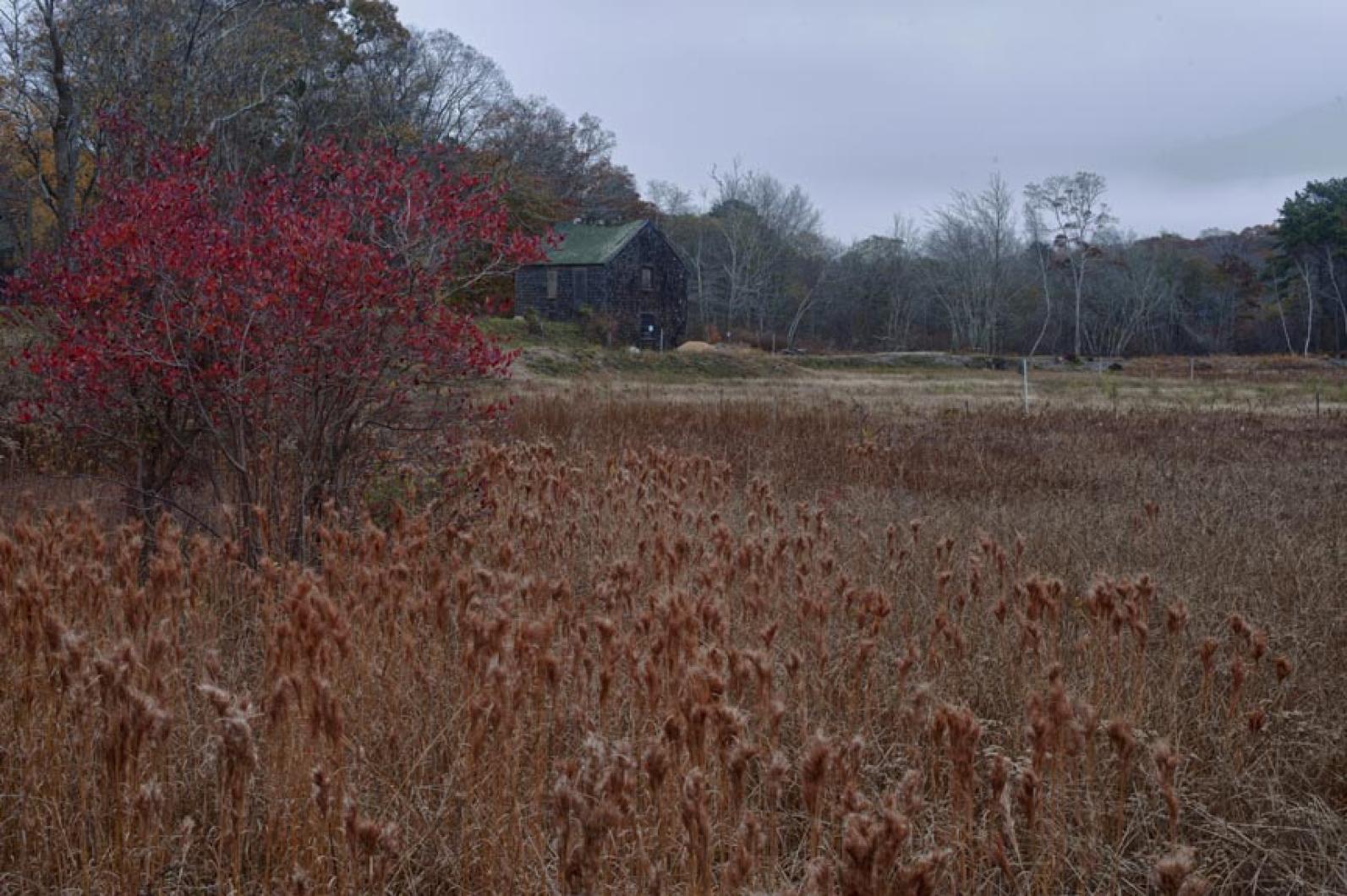When you think of cranberries, no doubt visions of Thanksgiving dance in the head: cranberry orange bread, cranberry relish, cranberry-stuffed acorn squash. Or perhaps you think of the scarlet landscape of bogs you pass while driving through the famed Cape Cod cranberry towns of Carver and Wareham on your way to Woods Hole.
But biting into a freshly picked cranberry right off the vine is an experience all its own. The vitamin C-packed cranberry is intensely sour, so sour it makes your cheeks pucker.
By contrast, for Vineyard Open Land Foundation director Carol Magee, the process of restoring the Cranberry Acres property in Vineyard Haven has been nothing but sweet. After taking over the 45-acre property in 1982, the foundation has worked for the past 10 years to restore the land to its original 1880s state as a working cranberry bog.
Historically integral to farming here, cranberry bogs were once in active production all across the Vineyard, from Aquinnah to Lambert’s Cove to Edgartown. The six-acre bog at Cranberry Acres was built in the late 19th century, along with a system of artificial ponds to help flood the low-lying bog.
In the 1970s, the previous owner abandoned the cranberry bog production and turned the property into a camp ground. The open land foundation, whose mission is limited development combined with conservation protection, bought the property to restore it to its originally intended use.
“[The foundation] is taking another step in its land use planning,” Ms. Magee said at the Lambert’s Cove Road bog this week. “We’re now trying to do this as a public demonstration illustrating that organic sustainable cranberry agriculture and wetlands protection can be mutually compatible goals. In an artificially-created system like this, if you don’t manage it, it will basically revert back to a maple swamp.”
She added: “When it does that, there are some rare species here and those species will be wiped out. This whole project keeps the hydrology of the area that’s been here for 100 years, and keeps it working.”
The foundation has successfully cultivated about a quarter of an acre of the bog, with plans to expand that into half an acre next year; the organic cranberries are now on sale at Morning Glory Farm in Edgartown.
The first part of the project in the early 1980s involved creating a limited subdivision with eight homes around the main reservoir pond and abutting bogs. The foundation then hired landscapers to clear unwanted vegetation and weeds around the property and bog, and created public trails around the main pond.
“We pulled out large stumps in the bog, all without driving heavy machinery into the bog,” Ms. Magee said. “Part of the whole idea is to renovate it using historic methods.”
Some of the cranberry vines date back to the original bog; during the restoration more vines were added. Robert Keese of Plymouth, an expert on cranberry bogs, was hired by the foundation to help with the project.
After clearing the bog of weeds and planting new vines, Mr. Keese and a crew covered the bog with sand to anchor the runners (like strawberries, cranberries grow above ground on runners). The foundation hand picks the cranberries, a method known as dry picking. Cranberries flooded with water are wet-picked, a method used in mass production.
“Cranberries don’t grow in water, they like to grow on peat because it has a high water table,” Ms. Magee explained. “People learned they could cultivate cranberries because there were natural bogs behind dunes on the Cape. When whalers lost their work in [mid 19th century] someone thought the sand that blew onto the bogs from dunes would ruin the cranberries, but actually they started thriving. That’s how they figured out they could cultivate them.”
The open land foundation used sand from Goodale’s pit, after certifying that the sand had not been exposed to any contaminants to keep the organic integrity of the bog intact. The foundation continues to grow its cranberries organically, and sort them by hand.
Pointing to an old building at Cranberry Acres that is next on the priority list for renovations, Ms. Magee said: “They used to wheel cranberries up a ramp up to the second floor and through the hole in the floor they’d dump the cranberries into the top of the sorting machine . . . [After the building is renovated], we want to recapture that as part of the public demonstration and process.”
Using $34,000 in Community Preservation Act funds from the town of Tisbury, in 2009 the foundation hired an architect to draft plans for renovating the building, whose roof has collapsed.
“We hope to finish the last piece and get the building renovated,” Ms. Magee said. “It would be a processing building and we could put our machines in it. There’d be a demonstration and we could sort cranberries here. We could sell cranberries here and give tours and educational programs.”
Ms. Magee hopes to someday have a bog manager and full crew, but for now she is focusing on raising funds for the project and wrapping up a good cranberry growing season.
“We’ve learned so much about this so far,” she said, walking above the bog on a berm that protects the berries. “It’s a really fascinating thing. It’s right at a real turning point.”







Comments
Comment policy »